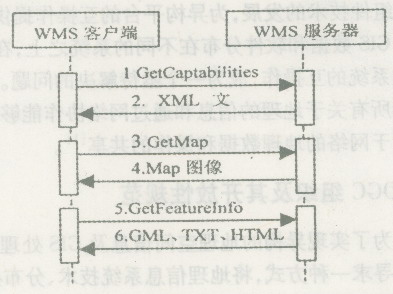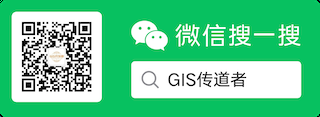OpenLayers官方示例详解一:Custom Interactions
目录
目录
一、示例概述
这个示例演示了通过ol/interactions/Pointer类创建一个自定义交互小部件(custom interaction)。
这个自定义小部件的功能是让用户能够在地图上面自由地拖动要素。
二、代码详解
2.1、派生自定义类Drag
为了实现这个自定义小部件,我们需要一个比ol/interactions/Pointer类具有更多属性的类,那么最好的方式就是继承ol/interactions/Pointer类,从而派生我们自己的类Drag。
//定义一个命名空间app
var app = {};
app.Drag = function(){
//借用构造函数,使app.Drag继承ol.interaction.Pointer
ol.interaction.Pointer.call(this, { //寄生组合式继承第二次调用
handleDownEvent: app.Drag.prototype.handleDownEvent,
handleDragEvent: app.Drag.prototype.handleDragEvent,
handleMoveEvent: app.Drag.prototype.handleMoveEvent,
handleUpEvent: app.Drag.prototype.handleUpEvent
});
this.coordinate_ = null; //保存鼠标点击坐标
this.cursor_ = 'pointer'; //保存当前鼠标光标样式
this.feature_ = null; //保存鼠标起始点击相交的要素
this.previousCursor_ = undefined; //保存上一次鼠标光标样式
};
//寄生式继承,使app.Drag继承ol.interaction.Pointer的原型方法
ol.inherits(app.Drag, ol.interaction.Pointer); //寄生组合式继承第一次调用
这里使用了JavaScript的寄生组合式继承的方式,使app.Drag继承了ol/interactions/Pointer类,所以app.Drag现在拥有Pointer类的所有属性与方法(不懂寄生组合式继承的同学必须先看懂这篇文章:JavaScript的继承)。
OpenLayers为我们提供了寄生组合式继承中寄生式继承需要用到的函数ol.interits(),查看它的源码如下:
* @param {!Function} childCtor Child constructor.
* @param {!Function} parentCtor Parent constructor.
* @function module:ol.inherits
* @deprecated
* @api
*/
export function inherits(childCtor, parentCtor) {
childCtor.prototype = Object.create(parentCtor.prototype);
childCtor.prototype.constructor = childCtor;
}
其实很简单,就是简单的寄生式继承的写法,创建了一个parentCtor原型对象的副本并赋给childCtor的原型对象,相信了解寄生组合式继承的同学都能看懂,这里就不赘述了。
app.Drag除了继承Pointer类,还添加了4个新属性:
- coordinate_ —— 用于保存鼠标点击的坐标
- cursor_ —— 用于保存当前鼠标光标的样式
- feature_ —— 用于保存与鼠标点击坐标相交的要素
- previousCursor_ —— 用于保存上一次鼠标光标的样式
2.1、添加Drag类的原型方法
首先需要一个监听鼠标点击(不包括松开)地图时触发的事件处理函数handleDownEvent:
//Function handling "down" events.
//If the function returns true then a drag sequence is started.
app.Drag.prototype.handleDownEvent = function(evt){
var map = evt.map;
//返回鼠标点击相交的要素
var feature = map.forEachFeatureAtPixel(evt.pixel, function(feature){
return feature;
});
if(feature){
this.coordinate_ = evt.coordinate; //保存鼠标点击的坐标
this.feature_ = feature; //保存与鼠标点击的坐标相交的要素
}
return !!feature; //相当于Boolean(feature)
};
handleDownEvent函数会在鼠标点击地图时触发,如果鼠标点击了要素,就会:
- 将鼠标点击的地图坐标保存到app.Drag类的coordinate_属性
- 将被鼠标点击的要素保存到app.Drag类的feature_属性
- 返回true,开启拖拉要素
鼠标拖拉要素时触发的事件处理函数:
//Function handling "drag" events.
//This function is called on "move" events during a drag sequence.
app.Drag.prototype.handleDragEvent = function(evt){
var deltaX = evt.coordinate[0] - this.coordinate_[0];
var deltaY = evt.coordinate[1] - this.coordinate_[1];
var geometry = this.feature_.getGeometry();
geometry.translate(deltaX, deltaY); //使图形转移deltaX、deltaY
//将鼠标所在新的坐标点保存到app.Drag的coordinate_属性中
this.coordinate_[0] = evt.coordinate[0];
this.coordinate_[1] = evt.coordinate[1];
}
鼠标拖拉要素时,该事件处理函数就会执行:
- 使拖拉的要素随鼠标光标一起移动
- 将鼠标所在新的坐标点保存到app.Drag的coordinate_属性中
鼠标在地图上移动时触发的事件处理函数:
//Function handling "move" events.
//This function is called on "move" events, also during a drag sequence
//(so during a drag sequence both the handleDragEvent function and this function are called).
app.Drag.prototype.handleMoveEvent = function(evt){
if(this.cursor_){
var map = evt.map;
var feature = map.forEachFeatureAtPixel(evt.pixel, function(feature){
return feature;
});
var element = evt.map.getTargetElement(); //获取地图的div元素容器
if(feature){
//如果鼠标坐标点与某个要素相交
if(element.style.cursor != this.cursor_){
//如果地图上鼠标光标的样式与app.Drag的cursor_属性保存的鼠标样式不一样
this.previousCursor_ = element.style.cursor;
element.style.cursor = this.cursor_; //转换光标
}
}else if(this.previousCursor_ !== undefined){
//如果鼠标坐标点不与任何要素相交,且app.Drag的previousCursor_属性不是undefined
element.style.cursor = this.previousCursor_; //转换光标
this.previousCursor_ = undefined;
}
}
};
鼠标在地图上移动就会触发该事件处理函数。
- 如果鼠标坐标点与某个要素相交,就会将鼠标光标转换为手形。
- 如果鼠标坐标点不与任何要素相交,鼠标光标就仍是箭头形的。
这里值得注意的是,不管是否处于拖拉要素的状态,该事件处理函数都会触发,即鼠标只要在地图上移动,该事件处理函数就会触发。
鼠标在点击松开时触发的事件处理函数:
//Function handling "up" events.
//If the function returns false then the current drag sequence is stopped.
app.Drag.prototype.handleUpEvent = function(){
this.coordinate_ = null;
this.feature_ = null;
return false;
};
- app.Drag的coordinate_属性设置为null
- app.Drag的feature_属性设置为null
- 返回false,关闭拖拉要素
2.3、将自定义交互小部件添加到地图
var map = new ol.Map({
//实例化自定义交互小部件app.Drag,并将其添加到默认交互部件中。
interactions: ol.interaction.defaults().extend([new app.Drag()]),
layers: [
new ol.layer.Tile({
source: new ol.source.TileJSON({
url: 'https://api.tiles.mapbox.com/v3/mapbox.geography-class.json?secure'
})
}),
new ol.layer.Vector({
source: new ol.source.Vector({
features: [pointFeature, lineFeature, polygonFeature]
}),
style: new ol.style.Style({
image: new ol.style.Icon({
anchor: [0.5, 46],
anchorXUnits: 'fraction',
anchorYUnits: 'pixels',
opacity: 0.95,
src: 'data/icon.png'
}),
stroke: new ol.style.Stroke({
width: 3,
color: [255, 0, 0, 1]
}),
fill: new ol.style.Fill({
color: [0, 0, 255, 0.6]
})
})
})
],
target: 'map',
view: new ol.View({
center: [0, 0],
zoom: 2
})
});
三、完整代码
<!-- This example demonstrates creating a custom interaction by subclassing ol/interaction/Pointer.
Note that the built in interaction ol/interaction/Translate might be a better option for moving features -->
<!DOCTYPE html>
<html lang="en">
<head>
<meta charset="UTF-8">
<meta name="viewport" content="width=device-width, initial-scale=1.0">
<meta http-equiv="X-UA-Compatible" content="ie=edge">
<title>Custom Interactions</title>
<link href="ol_v5.0.0/css/ol.css" rel="stylesheet" type="text/css" />
<script src="ol_v5.0.0/build/ol.js" type="text/javascript"></script>
</head>
<body>
<div id="map" class="map"></div>
<script>
//定义一个命名空间app
var app = {};
app.Drag = function(){
//借用构造函数,使app.Drag继承ol.interaction.Pointer
ol.interaction.Pointer.call(this, { //寄生组合式继承第二次调用
handleDownEvent: app.Drag.prototype.handleDownEvent,
handleDragEvent: app.Drag.prototype.handleDragEvent,
handleMoveEvent: app.Drag.prototype.handleMoveEvent,
handleUpEvent: app.Drag.prototype.handleUpEvent
});
this.coordinate_ = null; //保存鼠标点击坐标
this.cursor_ = 'pointer'; //保存当前鼠标光标样式
this.feature_ = null; //保存鼠标起始点击相交的要素
this.previousCursor_ = undefined; //保存上一次鼠标光标样式
};
//寄生式继承,使app.Drag继承ol.interaction.Pointer的原型方法
ol.inherits(app.Drag, ol.interaction.Pointer); //寄生组合式继承第一次调用
//以上代码使用寄生组合式继承的方式使app.Drag继承了ol/interaction.Pointer类,
//并添加了额外的coordinate_, cursor_, feature_, previousCursor_ 4个新属性
//Function handling "down" events.
//If the function returns true then a drag sequence is started.
app.Drag.prototype.handleDownEvent = function(evt){
var map = evt.map;
//返回鼠标点击相交的要素
var feature = map.forEachFeatureAtPixel(evt.pixel, function(feature){
return feature;
});
if(feature){
this.coordinate_ = evt.coordinate; //保存鼠标点击的坐标
this.feature_ = feature; //保存与鼠标点击的坐标相交的要素
}
return !!feature; //相当于Boolean(feature)
};
//Function handling "drag" events.
//This function is called on "move" events during a drag sequence.
app.Drag.prototype.handleDragEvent = function(evt){
var deltaX = evt.coordinate[0] - this.coordinate_[0];
var deltaY = evt.coordinate[1] - this.coordinate_[1];
var geometry = this.feature_.getGeometry();
geometry.translate(deltaX, deltaY); //使图形转移deltaX、deltaY
//将鼠标所在新的坐标点保存到app.Drag的coordinate_属性中
this.coordinate_[0] = evt.coordinate[0];
this.coordinate_[1] = evt.coordinate[1];
}
//Function handling "move" events.
//This function is called on "move" events, also during a drag sequence
//(so during a drag sequence both the handleDragEvent function and this function are called).
app.Drag.prototype.handleMoveEvent = function(evt){
if(this.cursor_){
var map = evt.map;
var feature = map.forEachFeatureAtPixel(evt.pixel, function(feature){
return feature;
});
var element = evt.map.getTargetElement(); //获取地图的div元素容器
if(feature){
//如果鼠标坐标点与某个要素相交
if(element.style.cursor != this.cursor_){
//如果地图上鼠标光标的样式与app.Drag的cursor_属性保存的鼠标样式不一样
this.previousCursor_ = element.style.cursor;
element.style.cursor = this.cursor_; //转换光标
}
}else if(this.previousCursor_ !== undefined){
//如果鼠标坐标点不与任何要素相交,且app.Drag的previousCursor_属性不是undefined
element.style.cursor = this.previousCursor_; //转换光标
this.previousCursor_ = undefined;
}
}
};
//Function handling "up" events.
//If the function returns false then the current drag sequence is stopped.
app.Drag.prototype.handleUpEvent = function(){
this.coordinate_ = null;
this.feature_ = null;
return false;
};
var pointFeature = new ol.Feature(new ol.geom.Point([0, 0]));
var lineFeature = new ol.Feature(
new ol.geom.LineString([[-1e7, 1e6], [-1e6, 3e6]])
);
var polygonFeature = new ol.Feature(
new ol.geom.Polygon([[[-3e6, -1e6], [-3e6, 1e6],
[-1e6, 1e6], [-1e6, -1e6], [-3e6, -1e6]]])
);
var map = new ol.Map({
//实例化自定义交互小部件app.Drag,并将其添加到默认交互部件中。
interactions: ol.interaction.defaults().extend([new app.Drag()]),
layers: [
new ol.layer.Tile({
source: new ol.source.TileJSON({
url: 'https://api.tiles.mapbox.com/v3/mapbox.geography-class.json?secure'
})
}),
new ol.layer.Vector({
source: new ol.source.Vector({
features: [pointFeature, lineFeature, polygonFeature]
}),
style: new ol.style.Style({
image: new ol.style.Icon({
anchor: [0.5, 46],
anchorXUnits: 'fraction',
anchorYUnits: 'pixels',
opacity: 0.95,
src: 'data/icon.png'
}),
stroke: new ol.style.Stroke({
width: 3,
color: [255, 0, 0, 1]
}),
fill: new ol.style.Fill({
color: [0, 0, 255, 0.6]
})
})
})
],
target: 'map',
view: new ol.View({
center: [0, 0],
zoom: 2
})
});
</script>
</body>
</html>
四、总结
这个示例的难点是寄生组合式继承,不太了解JavaScript的这种继承方式的同学可能觉得比较复杂,但是多思考几遍还是能很熟练的掌握这种继承方式。
其次就是定义事件处理函数,可以说OpenLayers使用事件处理函数给我们提供了适当的接口,让我们自己去实现想要的功能。
转载自:https://blog.csdn.net/qq_35732147/article/details/82842167




